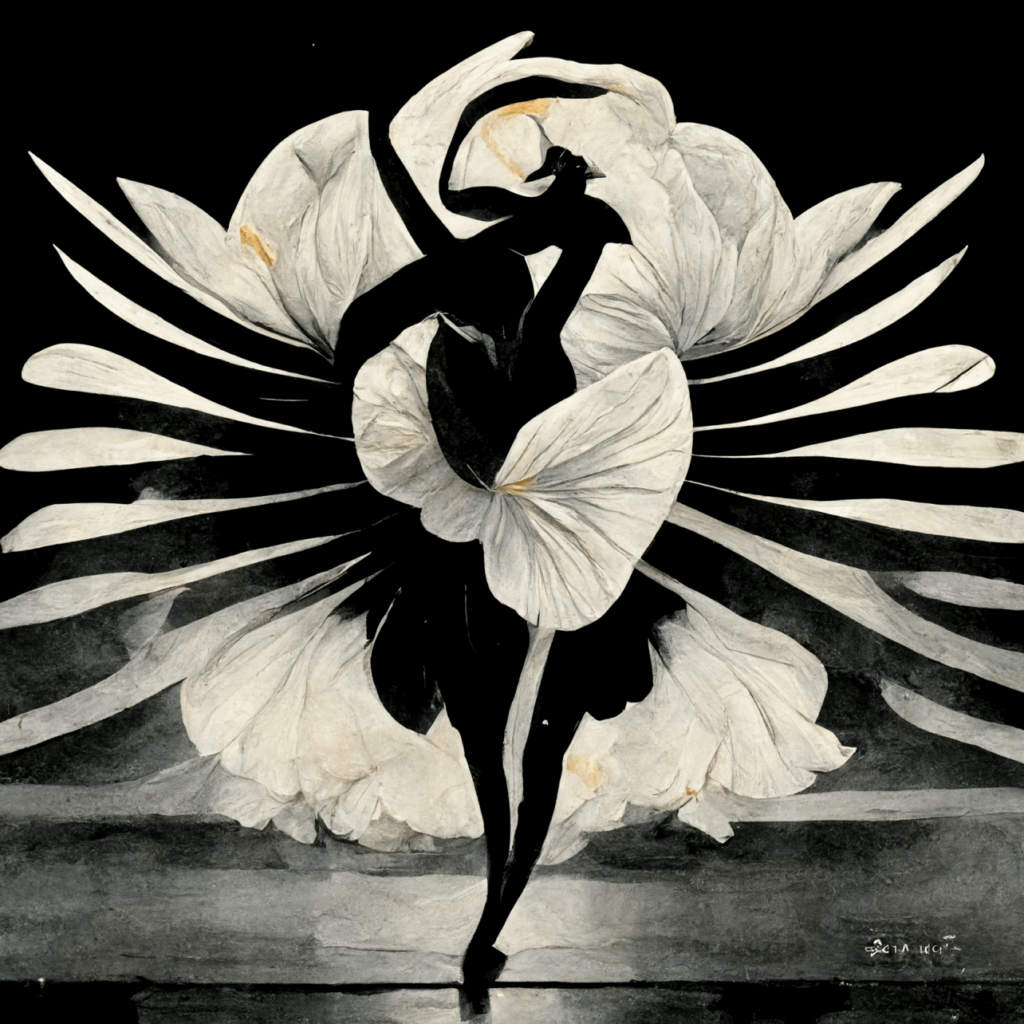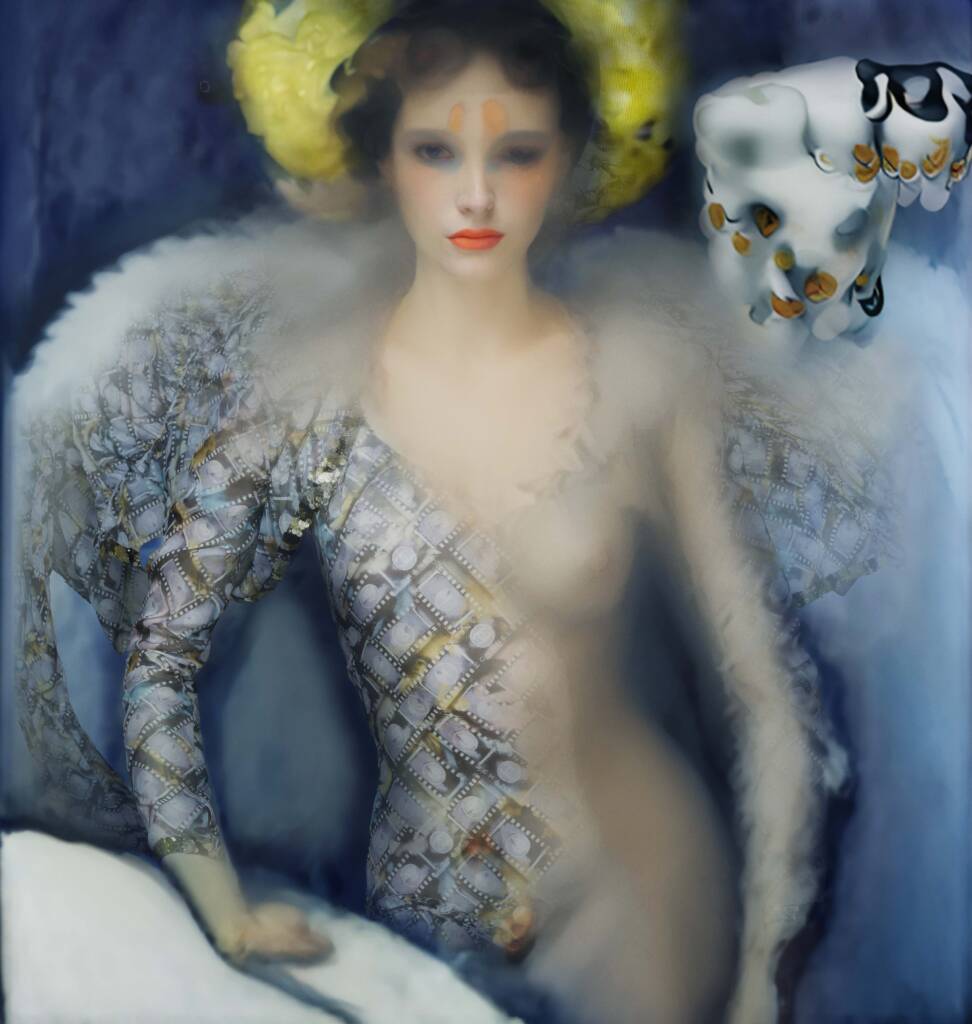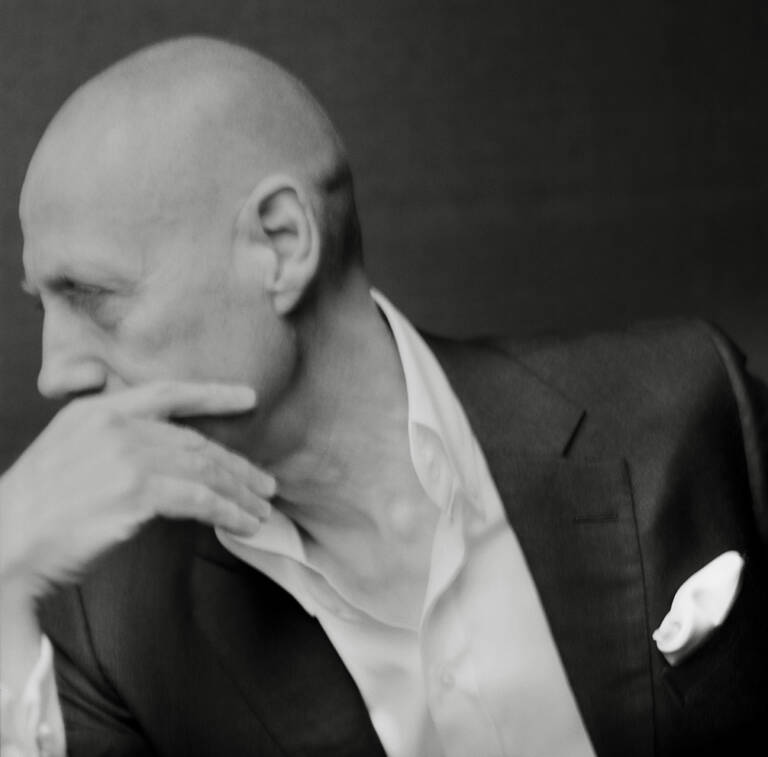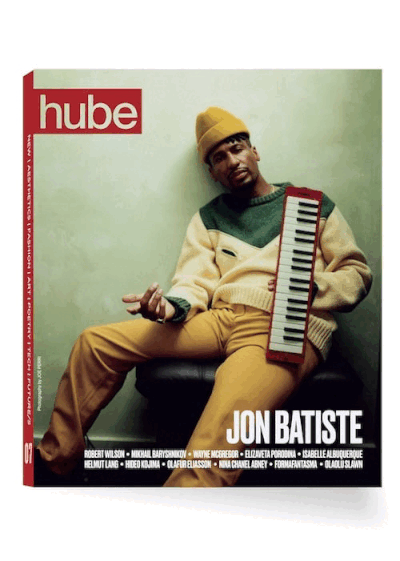
A.D., 2023

ALEX CONSANI wearing CHANEL, 2024
Nick Knight is just as comfortable in a studio taking photographs as he is traversing the many visual planes of the internet or tending to his beloved garden. Arguably one of the most celebrated fashion photographers of our time, Knight is dedicated to the craft of image making his work defined by a unique way of seeing the world and an ongoing curiosity about the many ways in which a picture can be made.
The recipient of both an OBE and a CBE, Knight’s contributions to photography move beyond the confines of a camera. From his early days at university in Bournemouth, where he painted figures directly onto film, to warping images with scanners and working with virtual reality and 3D printing, he has consistently sought new ways to tell visual stories. In 2000, he founded SHOWstudio, a digital platform that pioneered live fashion broadcasting which has continued to break ground with experiments in 3D imaging, avatars, and AI.
Knight’s creative vision has shaped the visual worlds of artists and designers globally. He’s directed music videos for Björk and Massive Attack, shot an album cover for David Bowie, collaborated with Yohji Yamamoto, Alexander McQueen, and David Chipperfield, and created iconic campaigns for Dior, Tom Ford, and Saint Laurent. We met to discuss the art of storytelling, the joy that comes from growing things, and where he finds inspiration.
hube: Gardens created for monks and philosophers were rich with symbolism and meaning. What kind of ideas do you cultivate in your garden?
Nick Knight: I think gardening and growing things is quite a unique experience—which I wasn’t really expecting. I first started during COVID. At the beginning of the pandemic, we were all told to stay at home and not go anywhere. It occurred to me then that we didn’t know what was going to happen in the future or where our food was going to come from. So I dug a small vegetable patch, made a greenhouse, and started planting food: potatoes, tomatoes, broccoli, and all sorts of other things.
I found that tending to the garden—planting the first seed, watching it grow in the green- house, and then planting it outside—was quite a spiritual process, which is strange for a man who’s not religious. It touched a part of me that I hadn’t really acknowledged before. I got a lot of pleasure from doing it. There’s a lot of joy in just being outside in the garden, which is very different from what I normally do. Usually, I’m in a white studio taking photos or editing, so spending time in such a different environment was refreshing.
I’m not sure if it initiated any particular ideas, but it gave me a new approach to life, or a deeper understanding of it—which I might not have gained had I not taken up growing things. There’s something marvellous and uplifting about planting a tiny seed and watching it grow into a two-metre-tall plant covered in fruit. It’s a fundamental part of life, but unless you grow things yourself, you don’t really appreciate how magnificent that transformation is.
These fruit and vegetables taste very different from what you buy in shops. Shop-bought food is often processed, irradiated, and stored for ages. In a garden, after the tomatoes are gone, that’s it until next season. This awareness of the seasons and what’s available becomes quite important.
There’s also something lovely about growing too much produce—because with vegetables, you often end up with more than you can eat. For example, if you plant one Jerusalem artichoke you get 30 or 40 back. You end up with wheelbarrows full, and you give them to people you care about, you swap recipes, it becomes a whole thing. I’m not very religious—I’m an atheist, in fact—but the symbolism of bread and the act of sharing food fascinates me.

